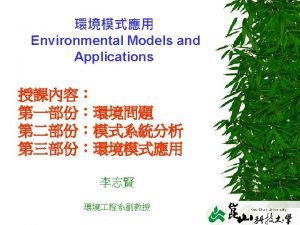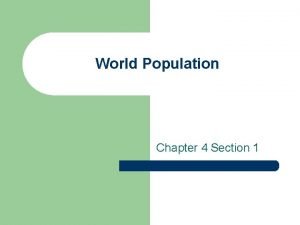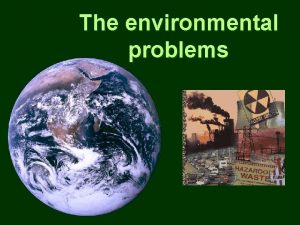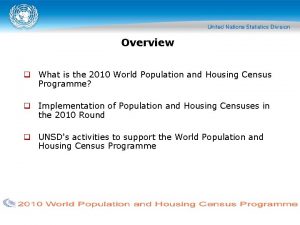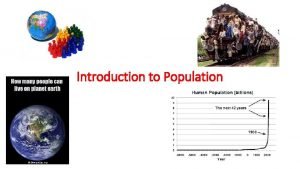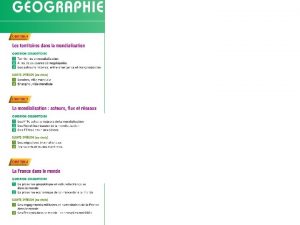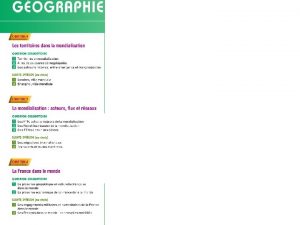Introduction to Population World Population page 32 33












- Slides: 12

Introduction to Population

‘World Population’ page 32 -33 of Atlas 1. What kind of projection is the map? (check out Greenland vs Africa) 2. What is population density? 3. When did the worlds population start to increase dramatically? 4. How big does the UN predict the world’s population will be by 2050? 5. In what areas of the world are large populations clustered together?

World Population Density

Overpopulation: Not enough resources for the inhabitants in an area. • Leads to famine, water and electricity shortages, increased unemployment. • Bangladesh, Ethiopia, and parts of China, Brazil and India • All suffer from localized famines, natural hazards (drought/flood) • Low incomes, poverty, poor living conditions & high levels of emigration


Under population: more resources than inhabitants in an area. • Surplus in food and water results in waste • Schools and hospitals don’t have enough demand to run at a sustainable level. • Thus, cost per capita for the service increases. • Less "working population" hurts countries economy and leads to an increase in taxation. • Eg- Canada and Australia


Optimum population is when there is enough resources for the number of inhabitants (population demand for goods is equal to the supply). Influenced by: A. Developments in technology B. Demographic structure changes C. Trade opportunities develop/falter D. New raw materials are discovered E. Value of old materials changes over time

Population Terms Using the internet define these terms (submit in google classroom): Population Density: Natural Increase Rate: Migration: Immigrants: Emigrants: Internal Migration: Net Migration Rate: Dependency Load:

Population Cartogram

World Population by Continent CONTINENT North America South America Europe Africa Asia Oceania / Australia Antarctica NUMBER OF PEOPLE 580 000 420 000 750 000 1 200 000 4 400 000 40 000 4 200 1 square = 10 million people

Cartogram Evaluation 1 1 1 2 3 4 4 Accuracy 5 6 7 8 9 10 Presentation 5 6 7 2 3 8 9 10 2 Features of a Map included 3 4 5 6 7 8 9 10
 Apa cover page.
Apa cover page. Chapter 4 population ecology test answer key
Chapter 4 population ecology test answer key Section 1 population dynamics
Section 1 population dynamics Population ecology section 1 population dynamics
Population ecology section 1 population dynamics Chapter 4 population ecology section 1 population dynamics
Chapter 4 population ecology section 1 population dynamics Page introduction
Page introduction Vietnam population clock
Vietnam population clock Guided reading activity 4-1 world population
Guided reading activity 4-1 world population Istj
Istj Population of the world 1914
Population of the world 1914 World's population
World's population 2010 world population
2010 world population Cartogram world population
Cartogram world population






